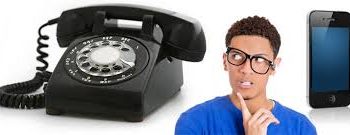 November 2022
November 2022
What happened to having a chat?
Rather than talk, we now rely on our phone to share articles, pictures and jokes. In the process something has been lost. One study of mobile phone users over three months found that six percent never made a single call. The majority of calls were under 90 seconds and 80 percent under five minutes. These calls are not conversations.
Younger generations view this as some sort of freedom that is more efficient. They send messages and maintain numerous conversational threads while doing something else. Their technique is to use two thumbs and not looking at the screen or perhaps when taking a bath which may be considered a skill of some sort.
We’ve forgotten a time when “landline” was not a word but the only option and willingly substitute text, e-mail and social media for human contact. The lost art of telephone conversation makes it easy to ignore calls from friends and family who we should want to spend time with.
There are drawbacks to greater digital communications at the expense of face-to-face and verbal communication
There are drawbacks to greater digital communications at the expense of face-to-face and verbal communication. We lose the ability to understand and share feelings. Verbal communication requires greater concentration to ensure we are immediately understood. Listening to someone speak allows us to better evaluate sincerity and truthfulness. Verbal communication requires a degree of spontaneity that makes it harder to deceive.
 Employment opportunities are reduced. Customer service, problem resolution, sales, collaboration and teamwork all require direct personal interaction which has become less comfortable for many. We used to describe this as people skills.
Employment opportunities are reduced. Customer service, problem resolution, sales, collaboration and teamwork all require direct personal interaction which has become less comfortable for many. We used to describe this as people skills.
We’ve chosen to silence ourselves
We’ve chosen to silence ourselves. Our offices are quieter places with open concepts intended to facilitate communication now filled with people wearing headphones clicking away on their phones. Commuter trains and buses are filled with people illuminated by a blue light and their head bowed.
Fewer are comfortable with verbal conversation and its unpredictability. More prefer the control of typing, or not responding at all. This is easier than being forced to converse but at the loss of our verbal skills. People are afraid to answer or make calls on their phone.
 A two-sided conversation is flexible, unpredictable and more substantial than text or e-mail. It delves into details more easily ignored when nonverbal communications are used. One thing leads to another during a single focused conversation. More gets addressed over a shorter period of time. Problems are identified and resolved faster.
A two-sided conversation is flexible, unpredictable and more substantial than text or e-mail. It delves into details more easily ignored when nonverbal communications are used. One thing leads to another during a single focused conversation. More gets addressed over a shorter period of time. Problems are identified and resolved faster.







